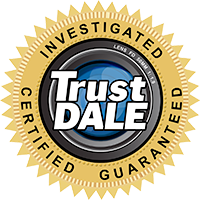The Hidden Risks of Uneven Concrete: Protecting Your Loved Ones and Visitors

Uneven Concrete Creates Hazards
A commonly overlooked hazard lurking on many properties: uneven concrete. While it may seem like a minor issue, uneven concrete can pose significant risks to your safety and that of your family and visitors. In this blog post, we will explore the potential dangers of uneven concrete and provide valuable tips on how to identify and address these hazards before accidents occur.
Dangers of Uneven Concrete:
1. Tripping and Falling: Uneven concrete surfaces can create unexpected changes in elevation, increasing the likelihood of tripping and falling. This can result in severe injuries, ranging from minor cuts and bruises to sprained ankles, broken bones, and head trauma.
2. Uneven Weight Distribution: Walking or standing on uneven concrete puts stress on your joints and muscles, as your body tries to adjust to the uneven surface. Over time, this can lead to musculoskeletal issues, such as back pain, knee problems, and joint inflammation.
3. Accessibility Challenges: Uneven concrete poses significant obstacles for individuals with mobility impairments, including those who use wheelchairs, walkers, or canes. It limits their ability to move freely and independently, making it difficult to navigate the property safely.
Common Scenarios Where Uneven Concrete Presents Hazards:
1. Sidewalks: Cracked or sunken sections of sidewalks can cause people to stumble, especially in high-traffic areas. This poses a risk to the elderly, children, and people with disabilities.
2. Driveways: Uneven driveways can lead to tire damage, car misalignment, and difficulty parking or entering/exiting your vehicle safely. It also increases the likelihood of tripping when getting in or out of your car.
3. Patios and Outdoor Areas: Uneven concrete in outdoor spaces can be treacherous, especially when combined with wet or slippery conditions. It compromises the safety of recreational activities and outdoor gatherings, putting your loved ones and guests at risk.
Identifying Uneven Concrete and Knowing When to Act:
1. Visual Inspection: Regularly inspect your property for any signs of cracks, sunken areas, or noticeable slopes in concrete surfaces. Pay attention to areas exposed to heavy use or weathering.
2. Test for Stability: Walk or press down on suspect areas of concrete to detect any sinking or shifting. Loose or wobbly concrete indicates a potential hazard that requires immediate attention.
3. Seek Professional Advice: If you are unsure about the severity of the problem or the necessary repairs, call us at Frontier Foundation & Crawlspace Repair. We can assess the situation and provide expert recommendations with a free, no-obligation inspection.
4. Hiring a Professional
If you have sinking concrete around your home, Frontier Foundation & Crawl Space Repair can lift and restore your concrete to help eliminate trip hazards and pooling water problems. We level concrete driveways, walkways, patios, pool decks, and slabs in Tennessee, Kentucky, and Alabama using a proven polyurethane foam injection solution called PolyLevel®. With PolyLevel®, we can quickly restore the appearance and safety of your concrete without the mess or cost of replacement or traditional mudjacking.
Additional Resources: Concrete Repair and Maintenance Information
Don't underestimate the dangers of uneven concrete on your property. Take proactive steps to identify and address these hazards, ensuring the safety of yourself, your family, and your visitors. Remember, professional help is just a phone call away. Create a hazard-free environment so that you can enjoy peace of mind. Concrete issues don’t get better with time, they get better with us!
 4.9
4.9 



